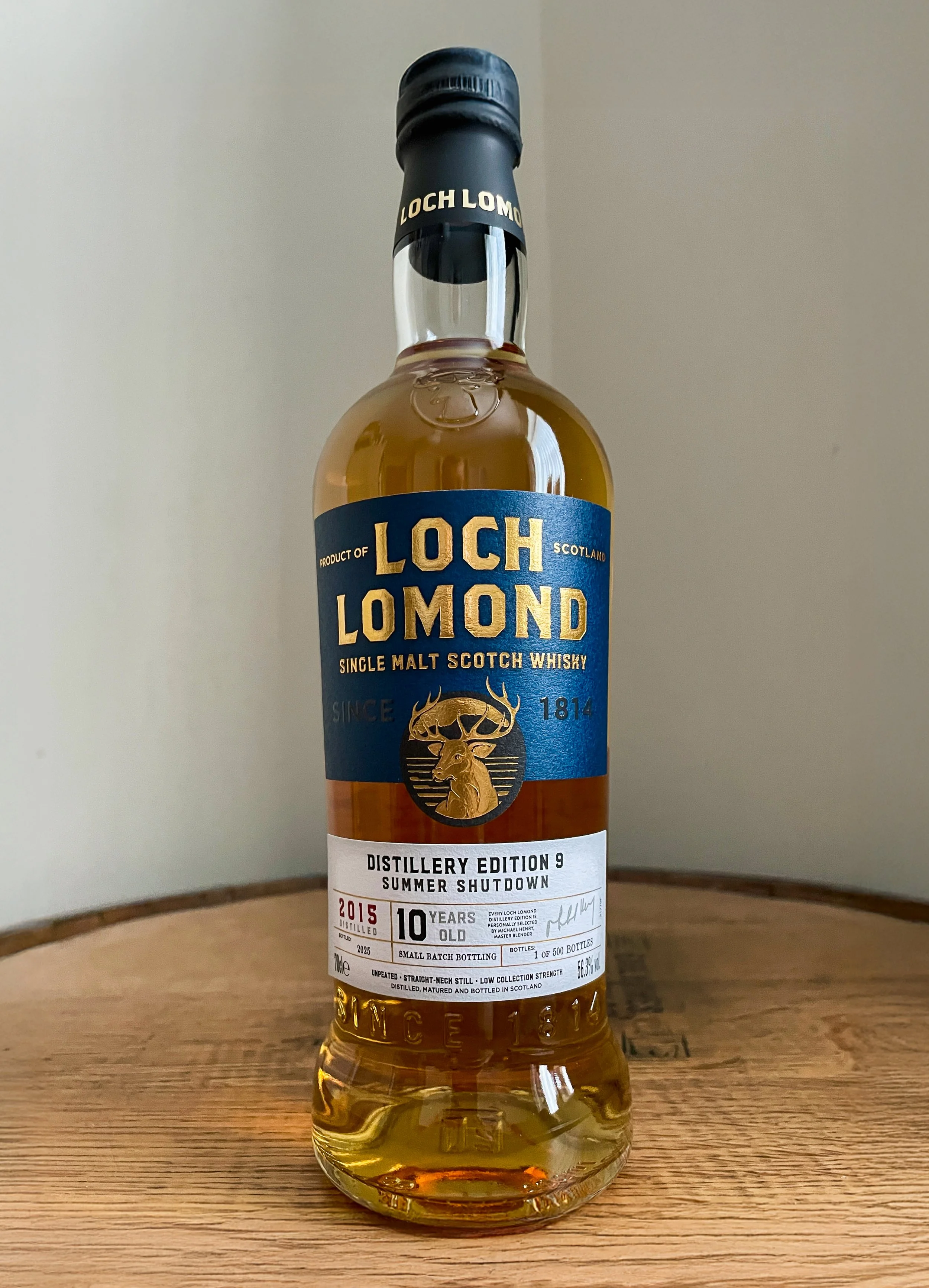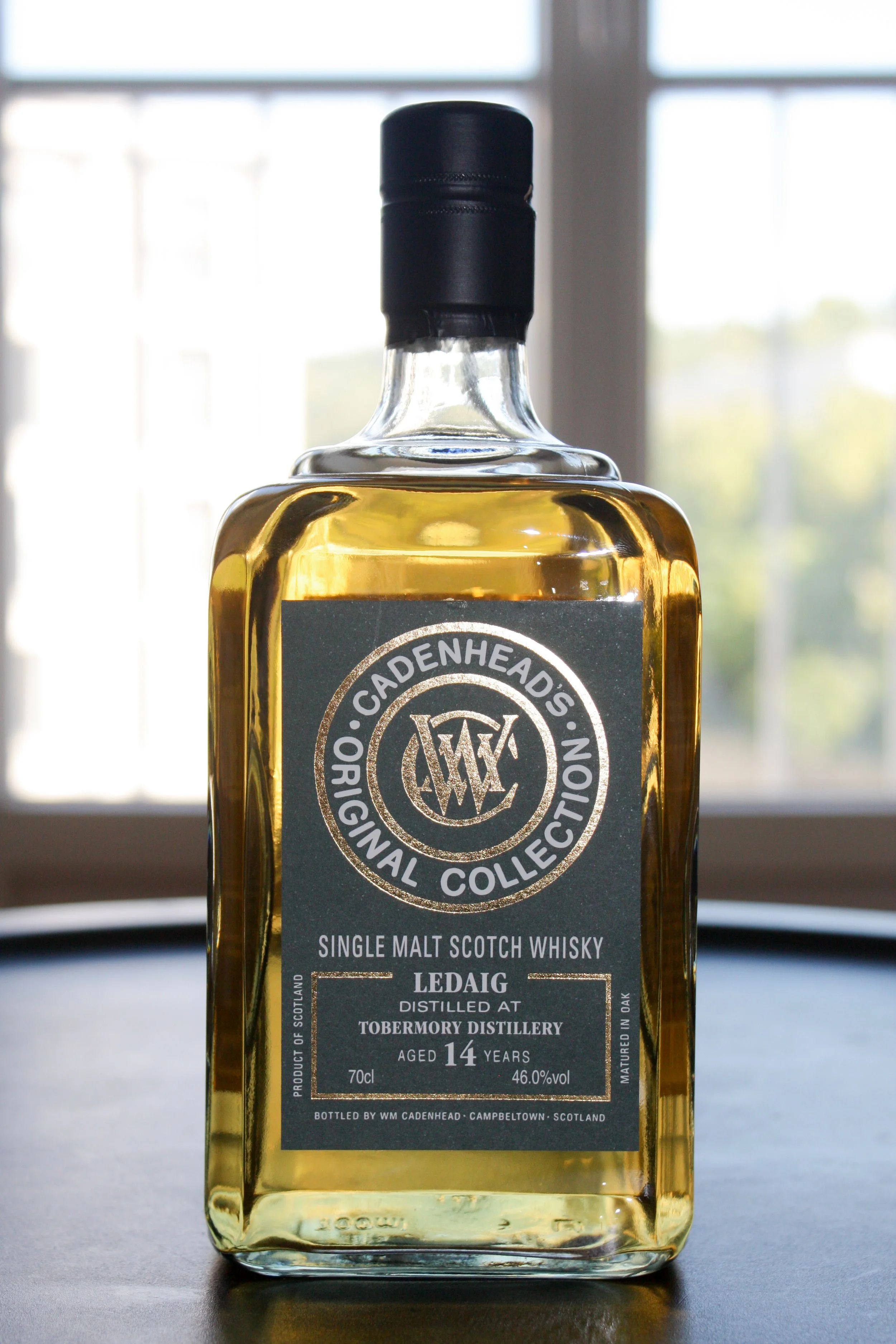Wild Turkey 101 8yo
Old label (c.2009) | 50.5% ABV
Score: 7/10
Very Good Indeed.
TL;DR
Celebrating the old label age statement
Everything the standard 101 brings and then some
I get it; age is but a number. Older doesn’t necessarily mean better and an age statement only provides extra information while saying nothing about the actual quality of your whisky.
I think a lot of people might be inclined to agree with these statements these days. It wasn’t always like that of course. After the whisky loch of the 1980s and 1990s, it’s safe to say things have changed significantly since.
While craftsmanship remains vital to making good stuff, there’s no denying how modern technology and a deep understanding of the impact of each part of the production process impacts the whisky we make and taste today. Luck these days has less to do with how a whisky turns out. Ever-developing knowledge about fermentation, distillation, wood policy and cask management, enables those who create whisky to better understand how a spirit develops once it’s put in a cask.
Gone are the days when whisky, particularly malt whisky, was produced with efficiency in mind. Rather it’s about creating flavour: Often young spirit is delicious. We’re now at a stage where many producers can hardly keep up with demand for their product, which has a significant impact on available stock.
When distilleries are forced to leave what they’ve producing for a minimum of three years while crowds scream for more, it’s easy to see how the current market not only puts a strain on older maturing stock, but also facilitates a significant price hike for what is, all in all, fairly young spirit.
When people are ravenous for a well-balanced dram, what do you do from a producer’s perspective? You take some of that ever-depleting older stock and blend it with younger whisky to create that wonderful balance between spirit character and cask influence and put it on the market.
As you’re allowed to only put the age of the youngest whisky on the label, you might feel a bit reluctant to charge people north of £60 for what is officially three or four year old whisky, so the way forward is to forsake the age statement and get creative with language. Words such as ‘reserve’, ‘legacy’, ‘distiller’s select’ have proved their merit in the past, or, when you’re a relatively young distillery and it would be rather ludicrous to play the provenance card, there are other options too.
Geography may help as producers can simply name their NAS whiskies after their immediate surroundings, some regions may opt for a Gaelic name. Non age statement whiskies are a godsend for many producers and businesses, as they can help to soften the blow upon the customer’s wallet when taking a peek at the price tag. Because charging the customer £70 or more for a ‘rare old’ is psychologically less painful on the buyer than expecting them to cough up the same amount for a bottle carrying a four year old age statement.
In best case scenarios there are ways to lift a bit of the veil surrounding the NAS. For example, Laphroaig Lore (app. £70-£80) is made from a mixture of 21+ year old whisky and younger stock aged around seven years. How do we know? Because they tell us as much on their website. Other producers are less scrupulous and just slap whatever price tag they seem fit, often north of £150 on a seemingly endless series of NAS releases, relying solely on the collectability and the brand name.
While all of this is applicable to scotch and most European whiskies, for many others it’s most certainly not. Australia, India and Taiwanese whisky, to name but three of the new-wave of whisky countries, have such extreme weather conditions that age statements are the exception to the rule. Whisky tends to be bottled at the very latest after around six or seven years of maturation. Because, if it’s left in the cask longer, the chances are producers will be left staring at a very lovely smelling but very empty cask. Angels are greedy over there.
Review
Wild Turkey 101, 8yo, 2009 release, matured in new charred white oak. 50.5% ABV. Price around £75 at auction. Bought for £30
And then there’s bourbon. Coming with a range of rules and regulations in its own right, the bottom line is if you see the words ‘straight bourbon’ on the label, it’ll be at least two years old. If it’s younger than four years, the age needs to be mentioned on the label. As it’s common practice to just see ‘straight bourbon’ on a lot of bottles, without an age being mentioned, it’s safe to assume what’s inside that bottle will be at least four years old. This may not seem like much if you hold it up against what we’re accustomed to here in Europe, but then again, the US and particularly Kentucky where +90% of all bourbon is produced, isn’t Scotland.
Kentucky summers tend to be hot, averaging about 87° F (or 30ºC). Standard in Kentucky, but if 30°C was the standard for Scottish summers, the population would likely boil to death. Kentucky winters are more in line with what Scots are comfortable and familiar with, as the average temperature tends to be around 23°F (-5 ºC).
It's often said that in the really hot climates such as India, you need to multiply the age of the whisky by three or four to compare it with its Scottish equivalents, so the Kentucky climate would account for roughly 1.5 to 2.5 times that of Scotland when talking whisky. I know that if I’m cutting another corner here, I might as well put my name down for the Daytona 500, but if you’ll pardon this broad-brushing, I think it helps to put things into perspective.
Bottom line: a lot if not most bourbons tend to be released as NAS, although there are indeed exceptions. Elijah Craig used to come with an age statement of 12 years, and its single barrel bulkier sibling still carries that age statement. Booker’s is often released at six or seven years of age, as is Russel’s Reserve, while both Bulleit and Eagle Rare have 10 yo expressions.
Wild Turkey, a brand that has been discussed on Dramface before, and is best known for the standard 101 release, although there are plenty of other expressions as well: from the neutered 81 proof to the Rare Breed and Longbranch. The 8yo Wild Turkey 101 was once a smaller batch release and appeared every other year or so. And while not a regularly available whisky, the expression has been around for years up until 2016 when they stopped releasing it, only for it to return last year as a single barrel release.
As is often the case with rare, discontinued or harder to find whisky, prices tend to creep up and rapidly so. Imagine my joy and luck when finding this on a shelf in a store on holiday a few years ago, only around €5 more than the regular NAS release. Walking out with a discontinued bottled, paying the original RRP, put a big fat smile on Earie’s face that day and many times after when pouring myself a dram of this.
That’s because it’s delicious.
Nose
Rich and sweet on cherries and rosewood, honey, chocolate with a waxy and viscous sensation. Underneath, there’s a more subtle aroma of kitchen herbs and soft oak notes. That combo of big and rich sensations of wax and viscosity alongside all kinds of sweeter notes is exactly how I like my bourbon.
Palate
Leathery and woody with a wide array of spices and tobacco. The wood delivers a big, dry mouthfeel and almost forces the sweeter, fruitier notes to settle for second fiddle. Dry cherry notes, dark honey and demerara sugar balance things out. A drop of water brings out the spice notes even further with more leather and wood, but also candy, translating into a long, oaky and leathery finish with lingering spice notes of ginger and cinnamon.
The Dregs
This is such a satisfying, warming, rich and above all moreish experience. Definitely not your run of the mill bourbon, but something to cherish and treasure, as I’m aware when it’s gone, it’s likely gone for good. I already quite like the standard NAS release, but this 8yo is on another level.
While I’m reluctant to state that more equals better, sometimes that age statement does count for something, as it turns out here. Curbing my enthusiasm, as I know it’s pretty hard to find these days, I can only plead with the good people in Kentucky, as I humbly lift my cup and ask; please, can I have some more?
The age statement is dead, long live the age statement.
Score: 7/10
Tried this? Share your thoughts in the comments below. EA
-
Dramface is free.
Its fierce independence and community-focused content is funded by that same community. We don’t do ads, sponsorships or paid-for content. If you like what we do you can support us by becoming a Dramface member for the price of a magazine.
However, if you’ve found a particular article valuable, you also have the option to make a direct donation to the writer, here: buy me a dram - you’d make their day. Thank you.
For more on Dramface and our funding read our about page here.

































